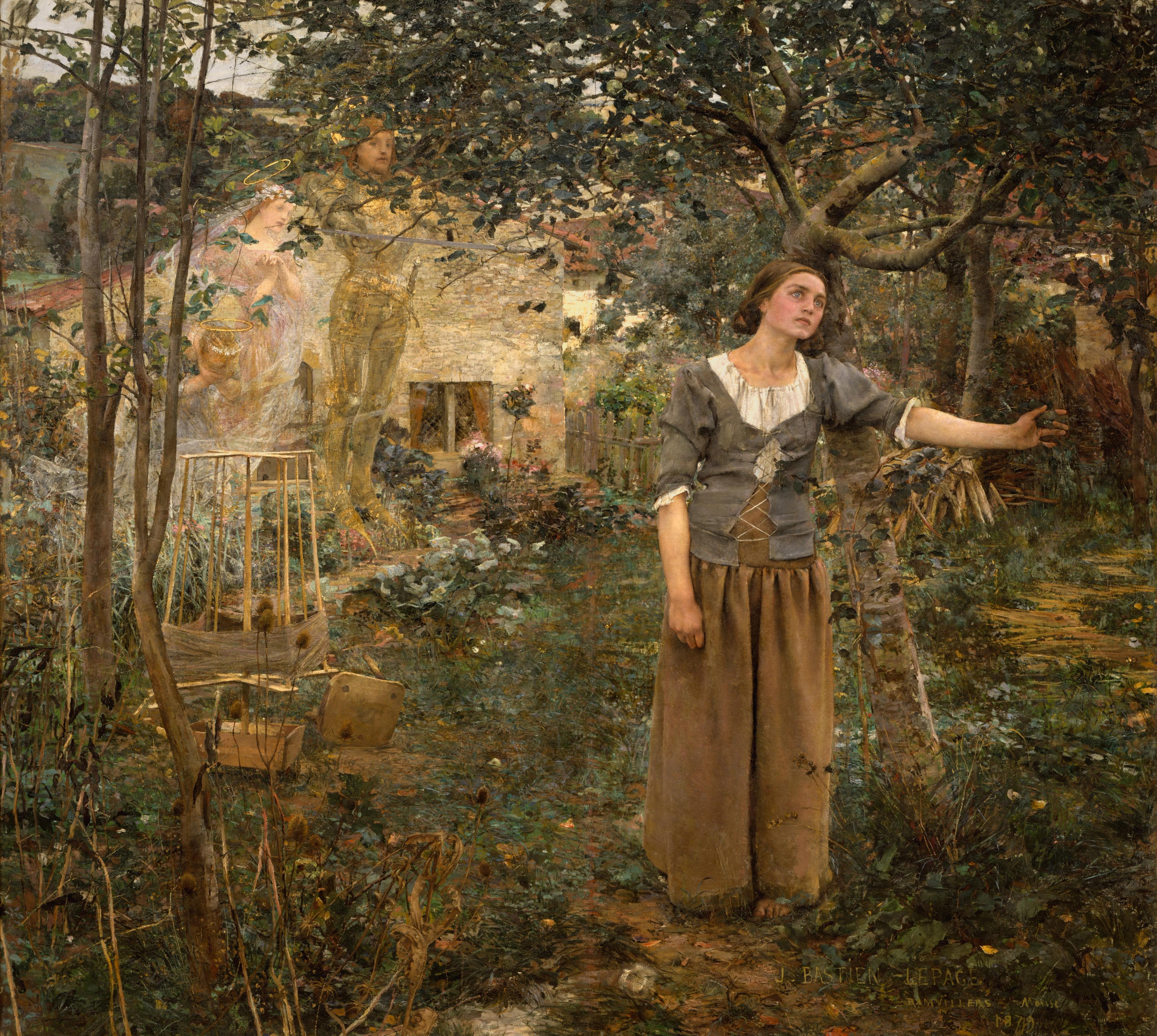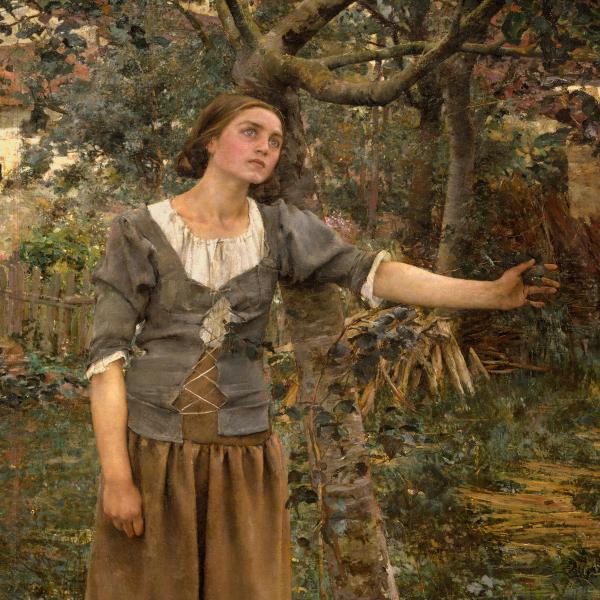In his poem “Emblazoned,” Billy Collins describes an encounter with Jules Bastien-Lepage’s painting Joan of Arc (1879). Joan of Arc was a medieval teenage martyr whose divine visions inspired her to take up arms for France against English invaders—and who was accordingly made a patron saint of France. Bastien-Lepage’s painting, which depicts the moment when Saints Michael, Margaret, and Catherine appear to the peasant girl in her parents’ garden, rousing her to fight the English invaders in the Hundred Years War, has been part of The Met collection since 1889.

Jules Bastien-Lepage (French, 1848–1884). Joan of Arc, 1879. Oil on canvas, 100 x 110 in. (254 x 279.4 cm). The Metropolitan Museum of Art, New York, Gift of Erwin Davis, 1889 (89.21.1)

Emblazoned
Billy Collins
The first time I saw Joan of Arc,
the painting by Jules Bastien-Lepage,
I could not believe my eyes
because I could not believe her eyes--
that pale electrical blue,
as if a switch had been flicked
and now she was lit from within,
gazing far into space,
beyond the unseen, daytime stars.
She is said to have heard her calling
but here, she is beholding it as well.
It’s also a puzzle of a painting,
featuring three figures
not just hidden in the tangle of trees
but levitating there as saints will do.
The three gold haloes give them away
but you have to lean in to see.
On other visits to the museum,
I saw Michael in his golden armor
then Margaret and darker Catherine last.
What strange Catholic fruit hovered there!
Joan was no stranger to me,
a young, favored student
at St. Joan of Arc grammar school,
where we saw pictures of St. Joan
either on a horse, wearing a breastplate,
or being devoured by flames,
but never alone in her parents’ garden
where she appeared so secular
I could imagine Joan’s mother
calling her in for supper from a window.
Our school in Queens was a far cry
from the storms of 15th century France,
yet we boys in the 8th grade
wore white shirts with the initials SJA
stitched on the pocket in blue.
Yes, I wore her monogram over my heart,
maybe as an added protection
from the snares and pitfalls
of childhood, if my ever-present
guardian angel ever fell asleep at the wheel.
